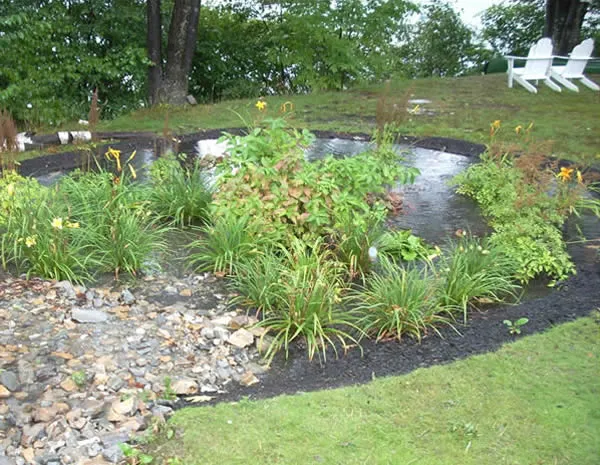By Elinor Epperson

Example of a water garden. Image: Environmental Protection Agency
Don’t flush that unwanted goldfish – find it a new home instead.
Home aquariums and water gardening are two of the many routes invasive species take to enter Michigan habitats. A Michigan State University Extension program provides educational materials and resources for rehoming unwanted aquatic pets.
Reduce Invasive Pet and Plant Escapes (RIPPLE) works with hobbyists, retailers and gardeners to minimize the release of invasive species into the wild.
Most people may not give much thought to letting one or two pets go for a variety of reasons – financial, lifestyle changes or change of seasons, for example – but Paige Filice, the program’s primary coordinator, said those numbers add up.
“It’s the collective impact of all of our actions put together,” she said. Filice recalled a recent walk through a park in Lansing where she saw an osprey dive into a pond. It emerged with a “very massive” goldfish, she said.
“And how’d that goldfish get there?” she said. “Likely somebody who had a goldfish in their aquarium that they didn’t want anymore.” Some species are harmless, but others can pose a significant risk to Michigan’s native wildlife.
Here’s what Filice suggests water gardeners and aquarium owners do to minimize that risk:
Get familiar with identification resources. RIPPLE provides identification brochures for crayfish, aquatic plants and fish. The Midwest Invasive Species Identification Network has an app that can help identify and report invasives.
And Michigan has a “most wanted” list of invasives. It includes 18 species considered “an immediate or potential threat to Michigan’s economy, environment or human health,” according to the state Department of Natural Resources.
Take lots of clear photos. Experts at RIPPLE and the DNR can help identify a suspicious bug, crustacean or plant if you’re unsure.
Install water gardens away from other water bodies. Rain and flooding can move species from a water garden to a natural waterway, flushing invasives downstream, Filice said.
Buy from reputable retailers. RIPPLE’s Freshwater Protector Network map includes over 30 aquatic pet retailers who can help with unwanted aquatic flora and fauna. Retailers are required to follow state and federal regulations on invasive species and generally support RIPPLE’s message, Filice said.
Filice emphasized taking that extra step to properly remove an unwanted animal or plant.
“It’s very, very, very important that what is put in an aquarium or water garden stays in an aquarium or a water garden,” she said.
“If you have something you don’t want, trade it with another hobbyist, try returning it to a local retailer. But absolutely under no condition should it go into a Michigan waterway,” she said.
Elinor Epperson has an environmental reporting internship under the MSU Knight Center for Environmental Journalism’s diversity reporting partnership with the Mott News Collaborative. This story was produced for Michigan Public.
